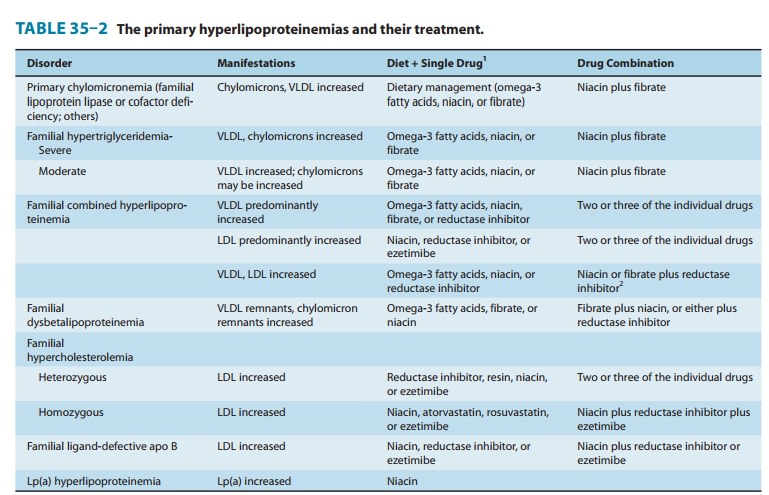Chapter: Basic & Clinical Pharmacology : Agents Used in Dyslipidemia
Lipoprotein Disorders
LIPOPROTEIN DISORDERS
Lipoprotein disorders
are detected by measuring lipids in serum after a 10-hour fast. Risk of heart
disease increases with concentra-tions of the atherogenic lipoproteins, is
inversely related to levels of HDL, and is modified by other risk factors
(Table 35–1). Evidence from clinical trials suggests that LDL cholesterol
levels of 60 mg/dL may be optimal for patients with coronary disease. Ideally,
triglycerides should be below 120 mg/dL. Although LDL-C is still the primary
target of treatment, reducing the levels of VLDL and IDL is also important.
Calculation of non-HDL cholesterol provides a means of assessing levels of all
the

Differentiation of the disorders requires identification
of the lipoproteins involved (Table 35–2). Diagnosis of a primary disorder
usually requires further clinical and genetic data as well as ruling out
secondary hyperlipidemias (Table 35–3).

Phenotypes of abnormal
lipoprotein distribution are described in this section. Drugs mentioned for use
in these conditions are described in the following section on basic and clinical
pharmacology.

Related Topics